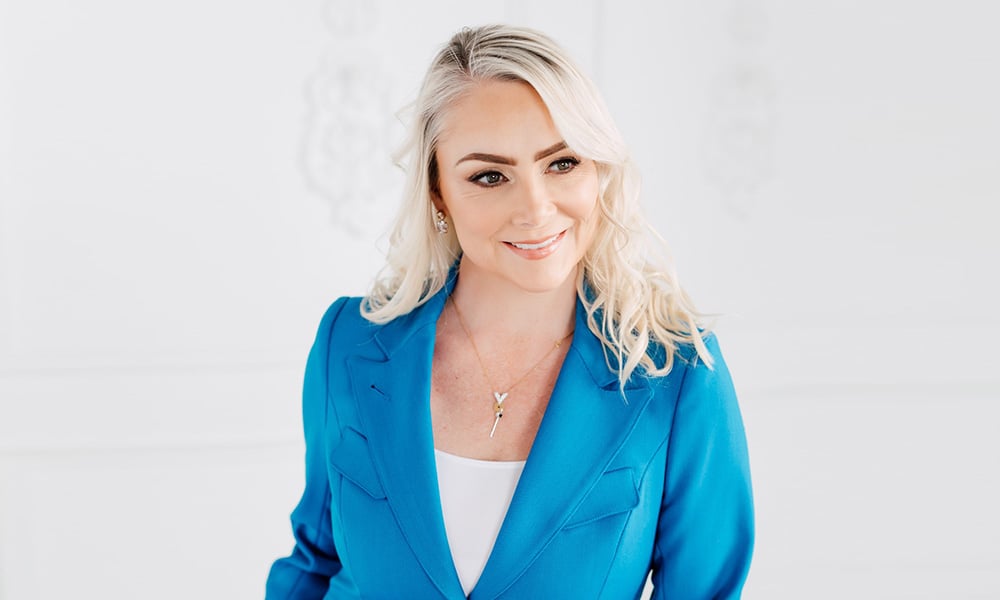From a childhood on welfare to starting her own practice, it's been quite the journey for entrepreneurial advisor

Robyn Thompson believes a multi-disciplinary portfolio approach is paramount for clients. It’s a stance that, eight years ago, meant she embraced her entrepreneurial instinct and started her own practice, Castlemark Wealth Management, one of the Best Wealth Management Teams in Canada.
Originally working with Richard Croft at Croft Financial Group – where she still holds a licence as Associate Portfolio Manager – Thompson found she kept encountering clients who wanted access to different types of managers, portfolios or insurance that wasn’t part of what the Group offered.
Stepping out on her own was “terrifying”, she told WP. But she had faith that branching out and establishing a wholly fee-for-service financial planning practice, “soup to nuts” with regards to client relationship and portfolios, was the right next step.
She said: “Anything that is going to be successful in life has to be a repeatable, scalable process, and I don't think you can do that overnight. It took me a couple of years to go from concept to ‘OK, this is the right time to move’. Then, essentially, you just walk to the edge of the cliff, jump off and hope the net you've made at the end of the drop is significant enough to hold you up!”
Thompson manages 84 client families and uses a number of third-party discretionary portfolio managers to help manage assets, Forstrong Global, Wealthsimple and Croft Financial Group among them. She believes the only way to provide proper diversification is to incorporate different managers’ styles and views of the market.
The drive to go it alone taps into a number of facets. A natural salesperson, the idea of engaging with people to find an end solution for a customer frames Thompson’s love of the job. The DIY attitude, meanwhile, stems from a childhood where she had to manage finances from a young age.
“I spent most of my childhood on welfare, so I come from a different side of that street,” she said. Coming from a broken home, learning about structure and discipline with money was a necessity not a choice. She worked from a young age and understood the value of putting food on the table and having enough to buy clothes, as well as the freedom that having money gave you. For many clients, this makes her more relatable than your average advisor.
“The return that you're making in your portfolio and the wealth that you have is meant to do something for you,” she said. “It's not meant to just go into an account and sit there forever. It's about what do you value, how you place value on that and how we can create scenarios where you can accomplish those goals and still be able to pivot and look towards the longer term.
“I can deal with people on many different levels because I understand where people are. Through the tiers [of wealth], it helps me be relatable.”
Thompson works with the organization Junior Achievement, where she goes into grade seven and eight classrooms across Toronto to teach financial literacy. She believes passionately that if kids have a solid foundation of what financial literacy is, it'll pay dividends in the future.
Like everyone else, Thompson has had to grapple with the effects of COVID-19. Wary of knee-jerk reactions to extreme headlines on 24-hour news channels, she immediately started reaching out to clients to have that human-to-human conversation on top of the typical emails and e-blasts to keep everyone informed.
Then it was a case of reviewing portfolios and seeing whether dividends were protected and what sectors people were in, where the new opportunities might be and whether clients could take on more risk? Many couldn’t wait to get into the market given how beaten up it was, and Thompson had more inflows and capital coming into portfolios than going out by a wide margin.
The banks certainly looked attractive in the wake of the downturn, as did broad-based indices, according to Thompson. She explained: “I'm big believer in indexes. By betting on a country or a market, it’s important to understand it provides diversification. You can always take your shots on one or two or three stocks that fit within your parameters but I do believe in having some diversification with broad-based indexing.”
She added: “But this is not the time to make significant wholesale changes in your portfolio or make snap decisions. You build the plans for a reason, and I find that people tend to want to abandon them when they need them the most.”
A big part of the past few months has, of course, been about communication and, frankly, holding clients accountable. This is an expensive time to learn what your real risk tolerance is.
She said: “We reviewed your risk tolerance, we sat down and had a conversation about a balanced portfolio growth portfolio, and, you know, can you handle volatility in these periods of time? This is why we ask those questions. It’s about holding clients to account with regards to the decisions they’ve made as a willing participant in capital markets and investments.”



